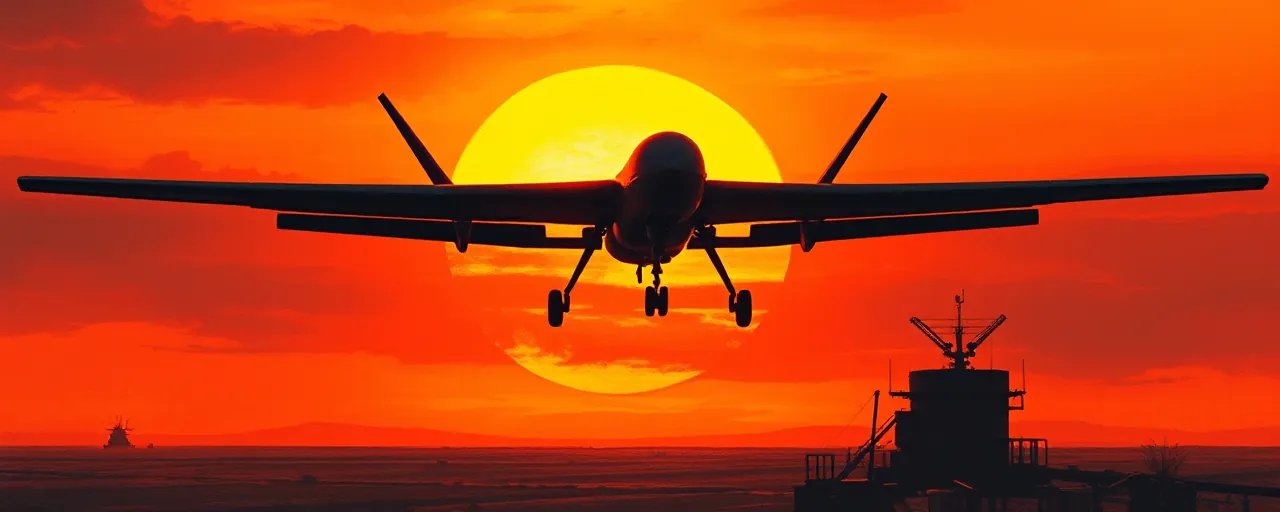A Bold Stand Against Tehran’s Terror Toys
Iran’s unmanned aerial vehicles, those menacing drones buzzing over conflict zones from Ukraine to the Middle East, have long been a thorn in the side of global stability. On April 1, 2025, the U.S. Department of the Treasury delivered a gut punch to Tehran’s military-industrial complex, targeting a sprawling network of six entities and two individuals fueling Iran’s UAV program. This isn’t just bureaucratic paper-pushing; it’s a calculated strike against a regime that thrives on chaos, arming terrorists and rogue states with tools of destruction. The message is clear: America won’t sit idly by while Iran’s drones rain havoc on civilians and allies alike.
Led by the Office of Foreign Assets Control, this move zeroes in on Qods Aviation Industries, a key player in Iran’s UAV production, and its shadowy procurement web stretching from the UAE to China. With President Trump’s National Security Presidential Memorandum 2, issued February 4, 2025, the administration has doubled down on a maximum-pressure campaign. Treasury Secretary Scott Bessent didn’t mince words: Iran’s proliferation of drones and missiles threatens U.S. personnel, our partners, and innocent lives. This isn’t about politics; it’s about survival in a world where Tehran’s ambitions grow unchecked.
Unmasking the Global Enablers
The Treasury’s latest designations expose a rogues’ gallery of facilitators, from Iran-based Rah Roshd International Trade Exchanges Development to UAE’s Infracom Communication Networks and China’s Zibo Shenbo Machinelectronics. These outfits aren’t innocent bystanders; they’re the grease in Iran’s war machine, procuring servo motors for the Mohajer-6 combat UAV and funneling parts to the likes of Shahid Bakeri Industrial Group, which churns out ballistic missiles. Hossein Akbari and Abbas Yousefnejad, Iranian operatives at the heart of Rah Roshd, orchestrate this illicit trade, while financial middlemen like Diamond Castle Electronics Trading LLC in the UAE keep the cash flowing. It’s a textbook case of how Tehran skirts sanctions with help from so-called neutral players.
Let’s not kid ourselves: the UAE and China aren’t just unwitting dupes. They’ve become critical nodes in Iran’s supply chain, exploiting lax oversight to ship components that end up in drones blasting Ukrainian cities or arming Hezbollah. Historical patterns back this up; since the 2000s, both nations have faced scrutiny for enabling Iran’s military buildup. Yet, when push comes to shove, their economic ties with Tehran often outweigh any real commitment to global security. The Treasury’s action shines a spotlight on this hypocrisy, proving that sanctions can hit where it hurts if we’re willing to follow through.
Sanctions That Bite, Not Just Bark
Executive Order 13382, a weapon in the U.S. arsenal since 2005, powers this crackdown. It’s not some dusty regulation; it’s a proven tool that freezes assets and slams the brakes on transactions with proliferators of weapons of mass destruction. The designations of Qods Aviation, Iran’s Ministry of Defense, and the Islamic Revolutionary Guard Corps over the years have piled pressure on Tehran’s ability to fund its war toys. Today’s move builds on that legacy, targeting not just the manufacturers but the middlemen who keep the gears turning. Research shows sanctions have disrupted Iran’s procurement networks, forcing them to scramble through back channels, yet they still manage to export drones to Russia and proxies like never before.
Critics will whine that sanctions don’t work, pointing to Iran’s persistence in arming chaos agents. They’re missing the forest for the trees. Without these measures, Tehran’s UAV program would be far more advanced, its drones more lethal, its reach even wider. The Justice Department’s parallel charges against Akbari and Reza Amidi for conspiring to support the IRGC, a terrorist outfit, hammer home the point: this isn’t just about economics; it’s about choking off a lifeline to killers. Sure, Iran adapts, but every dollar they lose, every motor they can’t buy, is a win for peace-loving nations.
The Real-World Stakes
Drones aren’t sci-fi gadgets; they’re game-changers in modern war, and Iran’s got a front-row seat. The Mohajer-6 and Shahed-136 models have pounded civilian targets in Ukraine, courtesy of Russia, while Hezbollah uses them to menace Israel. Studies confirm what’s obvious: these UAVs amplify instability, turning regional squabbles into full-blown crises. Civilians bear the brunt, living under constant threat of a strike from above. Tehran’s proliferation isn’t a victimless crime; it’s a calculated play to export terror, and the Treasury’s action is a desperately needed counterpunch.
No Retreat, No Surrender
This latest salvo from Treasury isn’t a one-off; it’s part of a broader push to dismantle Iran’s military ambitions brick by brick. The designations lock up assets, ban U.S. transactions, and signal to banks worldwide: deal with these players at your peril. Violations carry stiff penalties, and the Department of Commerce adds teeth with export controls that choke off high-tech goodies. It’s a multi-front war on Iran’s ability to wage war, and the results speak for themselves. Tehran’s still in the game, but it’s limping, not sprinting.
Some will argue we’re poking a hornet’s nest, that diplomacy could tame Iran’s drone obsession. That’s a fairy tale for the naive. Decades of talks have yielded zilch while Tehran’s UAVs multiply. The only language Iran respects is strength, and this administration gets it. By hitting their wallet and their supply lines, we’re not just slowing their roll; we’re setting the stage for a world where America’s enemies think twice before arming up. That’s not punishment; that’s progress.
